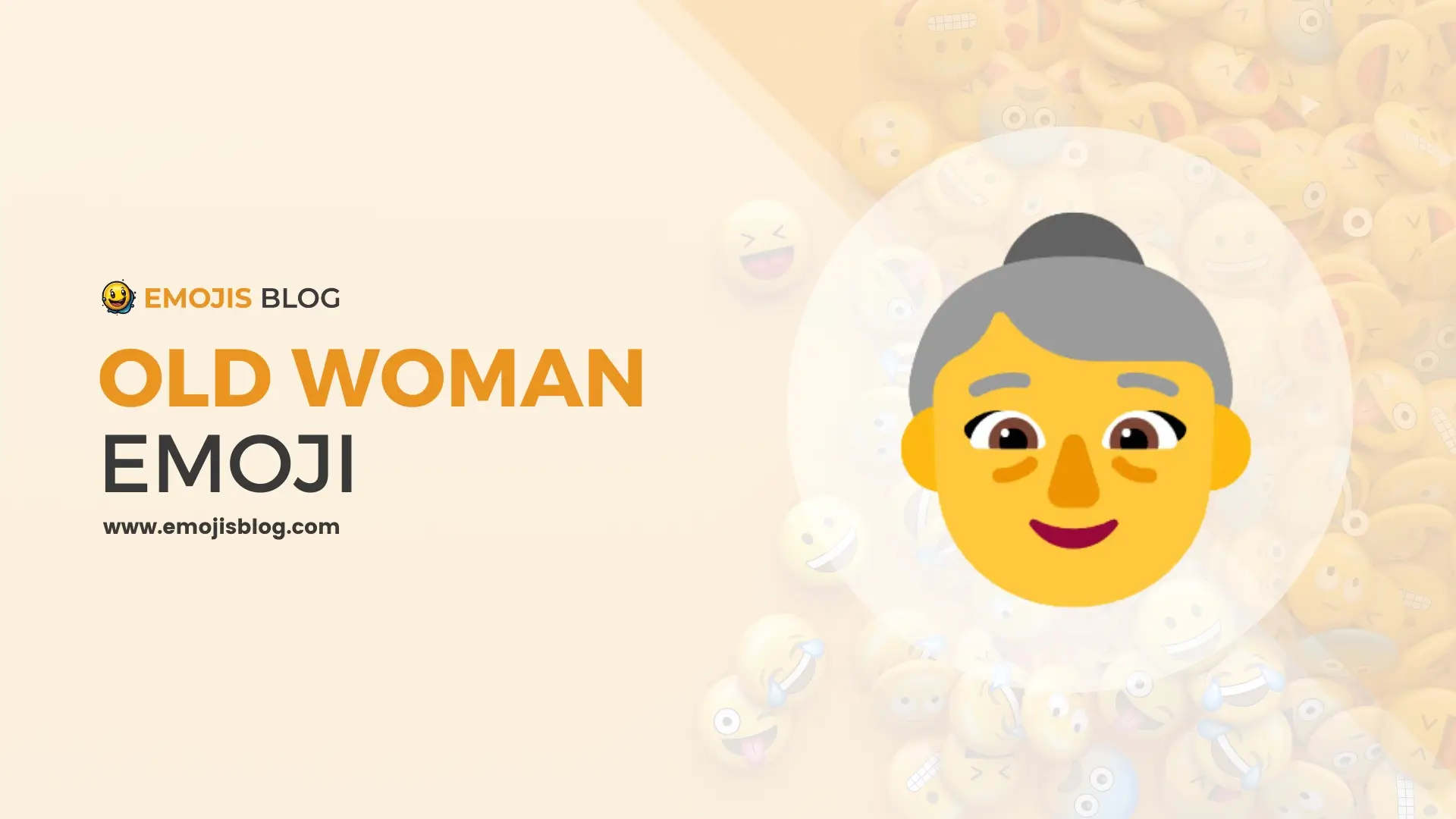What Does The Old Woman Emoji Mean 👵
👵
The Meanings Of Old Woman Emoji 👵
The old woman emoji 👵 is a digital icon that represents an elderly female figure, characterized by features such as gray hair and wrinkles, to signify aging. It’s part of the broader emoji collection designed to represent people across different age groups, adding depth to digital communication by enabling users to express concepts related to family, aging, wisdom, and experience. This emoji is widely used to reference grandmothers or elder women affectionately, discuss topics related to aging, or symbolize wisdom and life experience. Its inclusion in the emoji lexicon promotes diversity and inclusivity, reflecting the spectrum of life stages and the value of representing them in our digital conversations.
Technical Information
| Attribute | Details |
|---|---|
| Emoji | 👵 |
| Unicode Version | 6.0 |
| Release Year | 2010 |
| Category | People & Body |
| Subcategory | Person-Role |
| Codepoints | U+1F475 |
| Shortcode(s) | :older_woman: |
| Description | Represents an elderly woman, characterized by features such as gray hair and wrinkles, signifying age. |
Understanding the Old Woman Emoji 👵
The old woman emoji, 👵, is a digital symbol that represents an elderly woman. This emoji is part of a broader category of emojis that depict people of various ages, genders, and professions, which are used to add personality and context to text-based communication. The old woman emoji showcases a figure with visible signs of aging, such as gray hair and wrinkles, often depicted in a neutral or kind expression. This emoji serves multiple purposes and conveys various meanings, depending on the context in which it is used.
Historical Context and Evolution
The old woman emoji was introduced as part of Unicode 6.0 in 2010 and has since become a staple in our digital communication. Over the years, it has undergone stylistic changes across different platforms, such as Apple, Google, Samsung, and more. Each platform interprets the emoji with slight variations, but the core essence remains the same—representing an elderly woman. The design changes reflect efforts to make emojis more inclusive and representative of real-world diversity.
Symbolism and Uses
The symbolism of the old woman emoji extends beyond merely depicting an elderly female figure. It embodies concepts of wisdom, experience, maturity, and the passage of time. Here are some of the common uses and meanings attributed to this emoji:
- Family and Relationships: The emoji is often used when talking about family members, especially grandmothers or elderly aunts. It’s a way to affectionately refer to these family members in conversations.
- Age and Aging: It serves as a playful way to talk about aging, birthdays, or to jokingly imply that someone is being old-fashioned or out of touch with current trends.
- Wisdom and Experience: In discussions, the old woman emoji can symbolize wisdom or experience gained over the years. It’s used to give weight to advice or opinions that draw from a long life of learning.
- Cultural References: Sometimes, the emoji is used to reference popular culture’s iconic elderly women characters or real-life figures known for their wisdom, leadership, or activism.
Representation and Inclusivity
The introduction of the old woman emoji marked a step towards more inclusive representation in digital communication. By including symbols that represent different ages, the emoji lexicon has become more diverse, allowing users to express themselves more fully and accurately. This inclusivity is crucial for fostering a sense of belonging and recognition among users from all walks of life.
Conclusion
The old woman emoji 👵 carries a rich tapestry of meanings and uses that go far beyond its simple depiction. Whether it’s used to talk about family, express respect for wisdom and experience, make light-hearted jokes about aging, or reference cultural icons, this emoji adds depth and diversity to our digital conversations. Its evolution and continued use underscore the importance of inclusive representation in the digital realm, allowing us to communicate more effectively and empathetically in our increasingly connected world.

